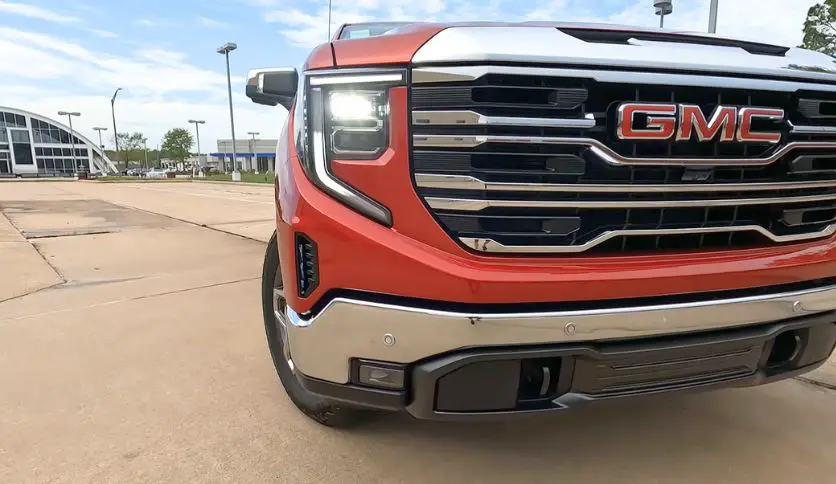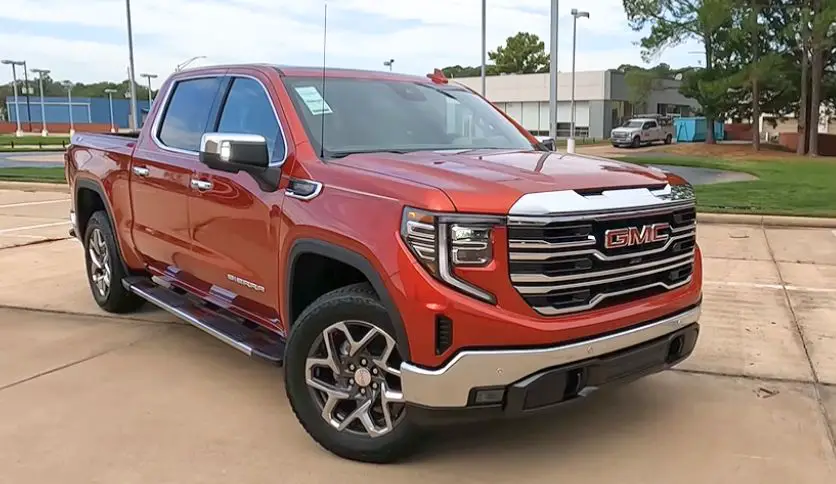When it comes to a smooth ride, the unsung heroes are undoubtedly the shocks. These vital components do more than just keep your ride buttery smooth; they’re crucial for your vehicle’s handling and safety. As a proud owner of a General Motors (GM) vehicle, you might wonder just how long you can expect your shocks to last before they need replacing.
This article aims to shed light on that very subject, offering you a detailed look at the lifespan of GM shocks and what are the best shocks for GMC 1500 for you better understanding.
Contents
What Are GM Shocks?
Shocks, short for shock absorbers, are essentially the dampers that absorb and reduce the shock impulses from the road, providing you with a stable and comfortable driving experience. GM, known for its wide range of vehicles, equips its cars with various shocks, from the standard types to more advanced air shocks, each designed to meet the specific demands of the vehicle they’re fitted to.
Average Lifespan of GM Shocks
So, how long can you expect your GM shocks to last? While there’s no one-size-fits-all answer, shocks typically have a service life of about 50,000 to 100,000 miles. However, for GM vehicles, this can vary based on the model and the type of shocks installed. It’s always best to consult your owner’s manual for the most accurate information.
Factors Affecting the Lifespan of GM Shocks

When it comes to the longevity of your GM shocks, several variables come into play. It’s not just about time or mileage; it’s about how the vehicle is used and cared for. Let’s delve deeper into the factors that can either shorten or extend the life of your shocks.
Driving Habits
Your driving style has a significant impact on the wear and tear of your shocks. If you have a penchant for high-speed driving and taking corners like a race car driver, you’re asking a lot of your shocks. They work overtime to keep the vehicle stable and to maintain tire contact with the road. Similarly, if off-road adventures or navigating rough backroads are more your style, the constant jolts and bumps are directly absorbed by your shocks, accelerating their wear.
Driving Conditions
The roads you travel on can be just as important as how you drive. City driving often involves frequent stops, starts, and turns, which can actually be less strenuous on your shocks compared to the constant, jarring hits they take on rural roads. Potholes, gravel, and uneven terrain are the archenemies of your GM’s shocks, as they cause the shocks to compress and extend more aggressively, leading to quicker wear.
Vehicle Load
How much weight you’re carrying in your vehicle can also affect your shocks. If you’re using your GM truck for towing or regularly hauling heavy loads, you’re putting additional pressure on your shocks. They have to work harder to stabilize the vehicle and keep everything under control, which can lead to stress and strain on the components, potentially reducing their effective lifespan.
Maintenance
Last but certainly not least, is maintenance. Shocks might seem like a fit-and-forget component, but they’re not. Regular inspections can catch issues like leaks, corrosion, or damage before they become serious. Simple actions, like cleaning dirt and debris from your shocks, can prevent premature wear and tear. Moreover, ensuring that other suspension components are in good shape can prevent your shocks from overcompensating for worn parts, which can also lead to quicker degradation.
Signs of Wear and When to Replace GM Shocks
The shock absorbers on your GM vehicle are critical for not only comfort but also safety and control. Over time, like any vehicle component, they can wear out and lose their effectiveness. Recognizing the signs of wear will help you determine the right time to replace them, ensuring your vehicle continues to perform optimally. Here’s what to look out for:
Ride Quality Deterioration
One of the most noticeable signs that your shocks are wearing out is a decline in ride quality. If your GM starts to feel unusually bouncy or seems to float after going over bumps, it’s a strong indicator that the shocks aren’t damping the suspension movement as effectively as they should. A stable, smooth ride is a key indicator of healthy shocks; any degradation in this area warrants attention.
Strange Noises Over Bumps
Good shocks should silently do their job, so if you start hearing knocking, squeaking, or other strange noises when you drive over potholes or speed bumps, it’s a red flag. These sounds could indicate that the shocks are no longer able to absorb the road irregularities effectively, causing excess movement and noise within the suspension components.
Uneven Tire Wear
Your tires can tell you a lot about the condition of your shocks. If you notice uneven wear, such as bald spots or areas of heavier wear on the tread, it could mean that the shocks are not keeping the tires firmly on the road. This inconsistent contact can lead to patchy tire wear and is a subtle yet clear sign that the shocks may need replacing.
Increased Stopping Distances
Shocks play a crucial role in braking efficiency. Worn shocks can increase the vehicle’s stopping distance because there’s less stability and tire grip during braking. If you start to notice that your vehicle takes longer to stop than it used to, or if it dives forward more when braking, it’s time to have those shocks checked out.
Visual Inspection
Sometimes, the signs of wear are visible. If you take a look at the shocks and see that they are leaking fluid, it’s a telltale sign that they are failing. The presence of oily residue on or around the shock absorber is an indication that the seals are no longer containing the hydraulic fluid, which is essential for shock operation.
Testing Shocks
A simple test you can perform is the bounce test. Press down firmly on the front or rear of your vehicle and let go. If the car bounces more than once or twice before coming to rest, it’s likely that the shocks are worn out.
Mileage Check
Lastly, consider the mileage on your vehicle. If you’ve clocked a significant number of miles since the last shock replacement, it might be time for a new set, even if the above signs aren’t overly apparent. Shocks can degrade slowly over time, and the decline in performance can be gradual enough that it’s not immediately obvious to the driver.
Replacing GM Shocks
When it comes to replacing your GM shocks, you have two options: DIY or professional replacement. If you’re mechanically inclined, replacing shocks can be a weekend project. However, if you’re not confident in your mechanical skills, it’s always best to leave it to the professionals.
Choosing the right shocks for your GM model is crucial, and costs can vary. On average, you might spend anywhere from $200 to $400 for a set of shocks, but prices can vary based on the model and the type of shocks you choose.
Enhancing the Longevity of Your GM Shocks
To get the most out of your shocks, follow these maintenance best practices:
- Regularly inspect your shocks for signs of physical damage or wear.
- Follow your GM vehicle’s maintenance schedule for shock checks.
- Drive cautiously over rough terrain to reduce the strain on your shocks.
FAQs For How Long do GM Shocks Last
Q: Can I replace just one shock, or do I need to replace them in pairs?
It’s generally recommended to replace shocks in pairs to maintain even performance and handling.
Q: Will new shocks improve my vehicle’s handling?
Absolutely! New shocks can restore stability and improve the overall handling of your vehicle.
Q: How do I know if my GM vehicle has air shocks?
Your vehicle’s manual will specify the type of shocks your GM is equipped with. If you’re still unsure, a professional mechanic can tell you.
Conclusion
Understanding the lifespan of your GM shocks is more than just a matter of maintenance—it’s about ensuring the safety and comfort of every drive. By keeping an eye out for signs of wear and staying on top of your vehicle’s maintenance needs, you can help ensure that your shocks—and your ride—remain in top form for miles to come.
Remember, shocks might be out of sight, but they should never be out of mind. Keep them in check, and they’ll keep your journeys smooth and secure.

Hello, this is Wesley Shelton, currently working in a car restoration company for over 5 years. Before that, I was a worker at a small car repair shop. As I was a car freak from a young age and worked as a professional for over half a decade, I think I now know pretty much everything about every car and its parts. To establish my name as a professional and help others by sharing my knowledge, I’ve created this website, which I work on whenever I get free time. I hope you’ve enjoyed my informative blog!


